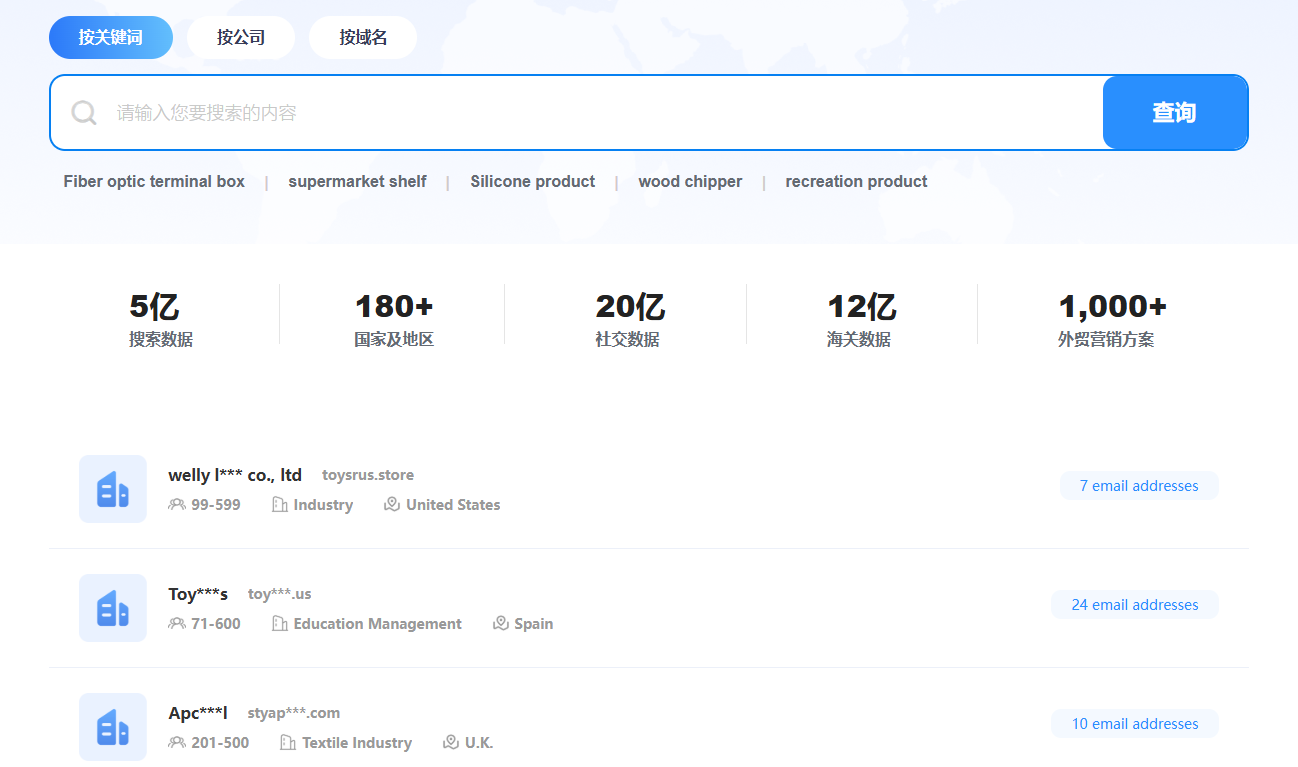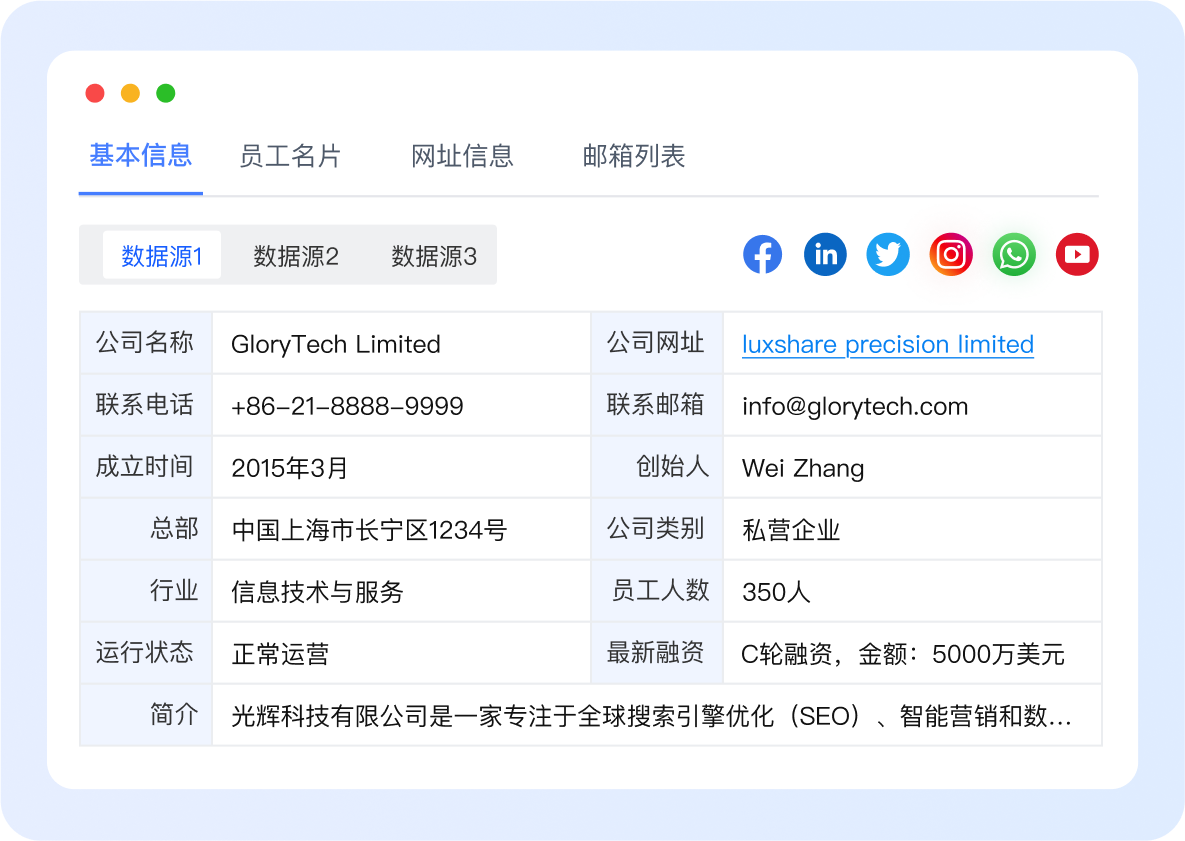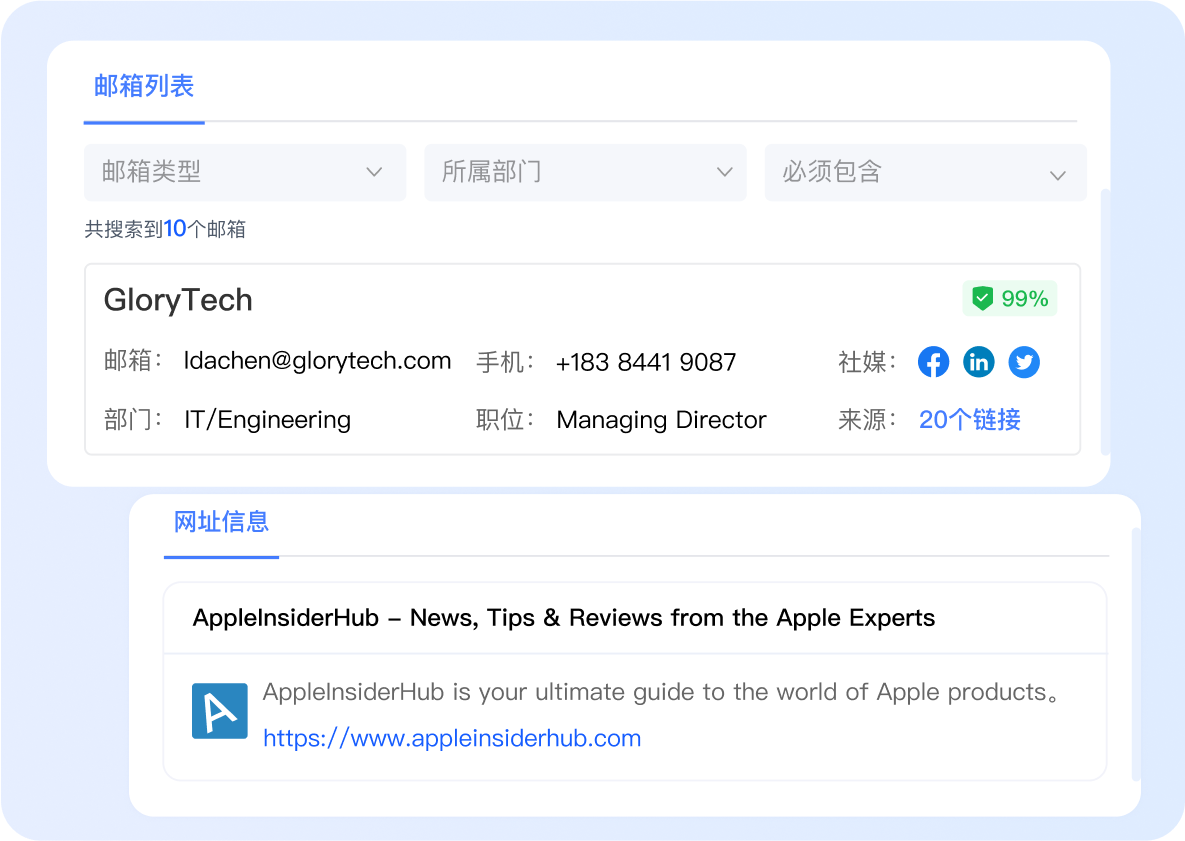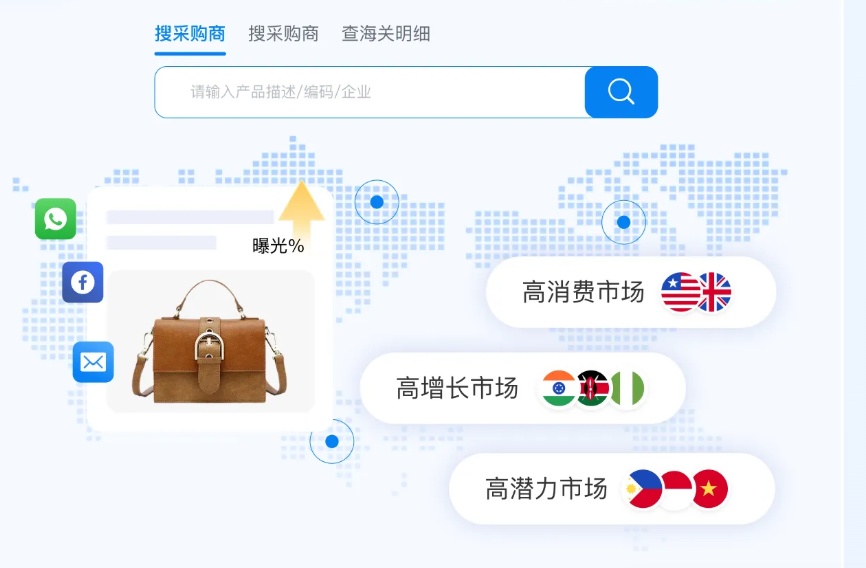 400-076-6558智领未来,外贸超级营销员
400-076-6558智领未来,外贸超级营销员
 400-076-6558智领未来,外贸超级营销员
400-076-6558智领未来,外贸超级营销员

Scene: 2 a.m., conference room of a machinery parts company in Shenzhen
Mr. Zhang stared at the customer list on the screen and worried: "I sent 500 emails to these newly developed South American customers, but only received 3 replies. What's the problem?" The sales manager smiled bitterly: "We don't even know whether the other party is the purchasing manager or the front desk, let alone what they are paying attention to recently..."
This is a typical dilemma in traditional foreign trade customer development - data fragmentation, unclear decision-making chain, and demand prediction relying on luck . However, the generation of "customer DNA" driven by AI technology is upgrading this inefficient model to "precision sniping" through tools such as AB customer global search .
"Customer DNA" is not an abstract concept, but a quantifiable customer portrait formed through AI's dynamic analysis of data such as the company's survival status, purchasing behavior, decision-making chain, and social dynamics . Its core value lies in:
Risk prediction : identifying “zombie companies” and “potential stocks”;
Efficiency leap : Penetrate 10 layers of organizational structure to lock in KP (key decision makers);
Demand forecasting : Inferring future purchasing preferences from historical behavior.
| Pain points of traditional model | AI Customer DNA Solution |
|---|---|
| Data is scattered in channels such as customs/social media/exhibitions | Multi-source data fusion analysis (customs, industry and commerce, social media, etc.) |
| The decision-making chain relies on “networking” | Semantic analysis + relationship graph automatically restores the decision chain |
| Demand speculation leads to ineffective communication | Machine learning predicts purchasing cycles and product preferences |

AI accesses a database of 230 million companies worldwide through AB Customer Global Search, and evaluates the health of companies from three aspects:
Business stability : registered capital, legal disputes, and management changes (e.g., a webpage crawler found that the CEO of a Mexican company had changed three times in the past three years, triggering a risk warning);
Purchasing activity : import and export frequency and category concentration in customs data (e.g. a Brazilian customer has a 20% increase in purchasing volume for six consecutive months and is marked as a high-potential customer);
Public opinion health : social media mention rate, industry forum evaluation (for example, a customer was exposed to product quality disputes on Reddit, and AI automatically downgraded its cooperation priority).
Operational suggestion : Set the filtering conditions of "purchase frequency ≥ once a month" + "registered capital ≥ 5 million US dollars", and the system will automatically push the TOP20 potential customers every day.

A Hangzhou clothing foreign trader spent two months trying to contact a German retailer but failed. AI locked the KP in 10 minutes using the following method:
Semantic parsing : Identify the name of the Vice President of Purchasing from the “Leader’s Speech” on the official website;
Behavior tracking : LinkedIn shows that the VP has recently been interested in the topic of "sustainable fabrics";
Relationship map : The purchasing manager under him has participated in online meetings with Chinese suppliers.
AI-generated decision chain reports include:
Key person position weight score (0-10 points);
Communication preferences (email/phone/video conference);
Historical decision-making style (price-sensitive/technology-oriented).

AI achieves three-level demand matching by analyzing customer behavior trajectories:
Explicit demand : recent purchase records in customs data (e.g. a customer continuously imports hydraulic pumps);
Hidden needs : technical discussions in social media dynamics (such as LinkedIn groups hotly discussing "automated packaging solutions");
Potential demand : derivation from industry trends (e.g. infrastructure construction in Southeast Asia will heat up after RCEP comes into effect, predicting demand for construction machinery).
Case : A 3C accessories manufacturer discovered that a US customer had added a new "VR equipment" section on its official website. AI automatically recommended compatible interface accessories, ultimately leading to a $500,000 order.
In order to dynamically update customer DNA, AB Customer has built a complete data closed loop:

Data collection layer : covering more than 180 national data sources such as customs, industry and commerce, and social media;
Algorithm model layer : NLP analyzes unstructured data (such as procurement plans in financial reports);
Application layer : Generate customer portrait reports, KP contact information, and customized email templates with one click;
Feedback layer : Continuously optimize the model based on email open rate and inquiry conversion rate.
An industrial equipment manufacturer in Shenzhen applied AB customer global search:
Phase 1 : AI screened companies in North America with "existence of more than 10 years + annual revenue growth > 15%" and excluded 32 high-risk customers;
Phase 2 : Lock the technical director as the KP and push the "Equipment Energy Consumption Optimization Plan" to replace the general product manual;
Phase 3 : Adjust communication strategy based on LinkedIn dynamics;
Ultimately, the customer acquisition cost in the first month decreased by 67%, and the conversion rate increased by 300% in three months.
As AI's multimodal learning capabilities evolve, customer DNA will present three major upgrade directions:
Cross-cultural adaptation : Automatically generate communication content that conforms to local language habits (e.g. Arabic customers prefer formal email titles);
Real-time dynamic updates : respond to public opinion events within seconds (e.g., a fire in a customer's factory triggers the recommendation of alternative suppliers);
Supply chain penetration : predicting derived demand through upstream and downstream linkages (e.g. the demand from an auto parts buyer to a battery supplier).
Conclusion
While competitors are still using the "wide net" tactic, companies that have mastered customer DNA have achieved "killing one enemy with every bullet". This is not future technology, but a new smart foreign trade rule that can be implemented today. Sign up for AB Customer Global Search now for a free trial !
.png?x-oss-process=image/resize,h_100,m_lfit/format,webp)
.png?x-oss-process=image/resize,h_100,m_lfit/format,webp)

.png?x-oss-process=image/resize,h_100,m_lfit/format,webp)
.png?x-oss-process=image/resize,h_100,m_lfit/format,webp)
.png?x-oss-process=image/resize,h_100,m_lfit/format,webp)
.png?x-oss-process=image/resize,h_100,m_lfit/format,webp)
